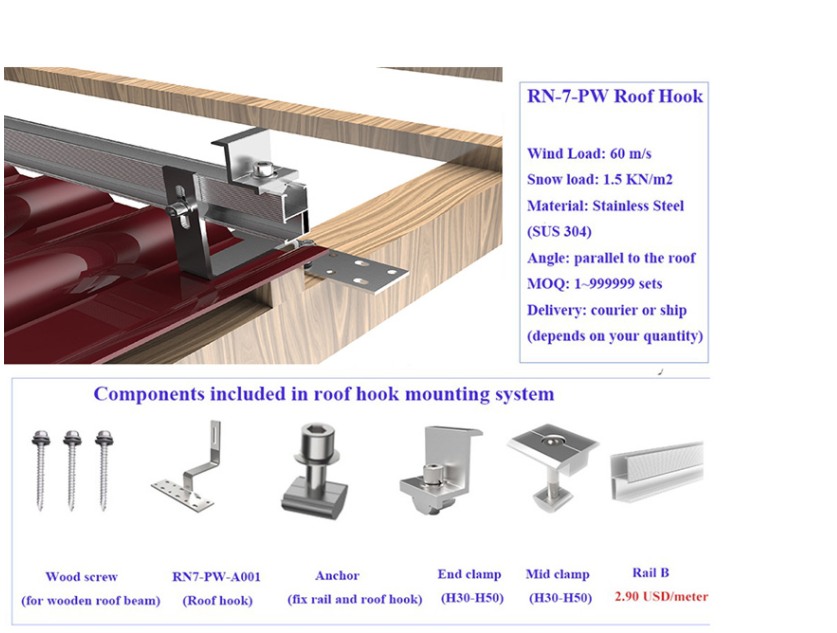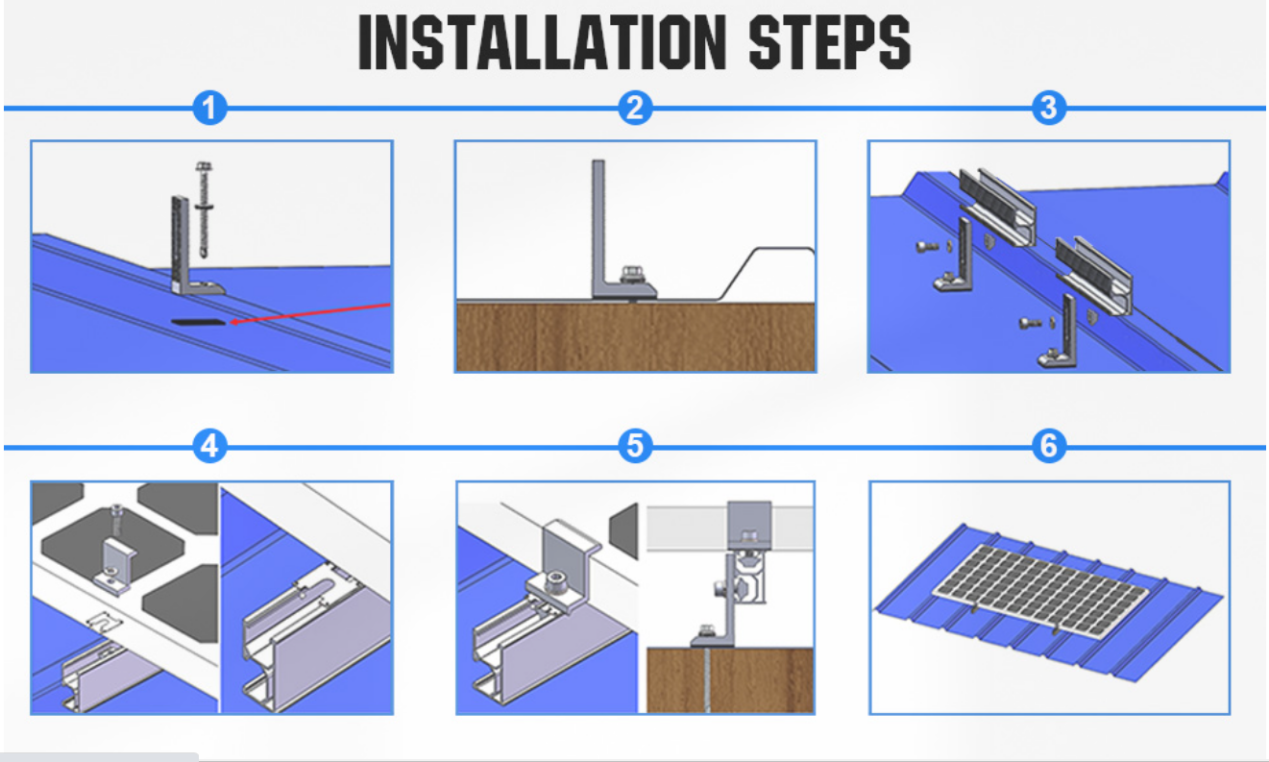-
 Tel:
Tel:+86-15996094444
-
 E-mail:
E-mail:
INQUIRE NOW

+86-15996094444

INQUIRE NOW
PV roof hooks
|
Product Material: |
High-strength extrusion Aluminum 6005-T5 + SS304 hook + bolt. |
|
Installation Site: |
Solar Mounting Rail, roof rail, ground rail. |
|
Wind Speed: |
Up to 60m/s |
|
Snow Load: |
Up to 1.5KN/m2 |
|
Warranty: |
10 years in material |
|
Standard: |
AS/NZS 1170,JISC8955,Euro Code 8,DIN 1055,IBC 2006 |
|
Service Life: |
25 years |

PV panel bracket]: Suitable for metal roofs, wooden roofs, tile roofs, and cement roofs. Unique design can be used for both flat roofs and pitched roofs
[High quality]: The mounting bracket is made of aluminum alloy, which is lightweight and strong. The aluminum surface is anodized and highly resistant to corrosion. The solar bracket can ensure a service life of up to 25 years in harsh environments
[Easy installation]: The solar roof bracket is compact in design and easy to install. It is very suitable for hanging solar panels. The kits come with an installation manual, so you don’t need to worry about installation issues
[Compatible]: Suitable for any size of rigid solar panels. Suggested solar panel thickness: 1.37inch (35mm)
[Package includes]: 10 Rails, 10 T Blocks, 10 Self-tapping Screws, 10 L Brackets, 10 Waterproof Gaskets, 4 Edge Pressure Blocks, 6 Middle Pressure Blocks(each set of brackets can be installed 1-4 pieces Solar panel

Jiangsu Aozheng Metal Products Co., Ltd. Is China PV Panel Bracket Suppliers and Wholesale PV Panel Bracket Factory, We are a combination of industry and trade enterprises, is committed to the production of stainless steel, aluminum alloy, carbon steel and low alloy steel materials, architectural hardware, the use of advanced automated cutting, stamping, welding process, is a diversified and large-scale professional production base, raw materials molding and machining plant in one, based on high quality and high-end market, the annual production of various types of building materials 2000 tons, mainly exported to the United States, Germany, Italy, Britain, South Korea, Australia, Canada, the Middle East and dozens of countries, with customers including large construction companies, including well-known construction team, has become their building materials in the Middle East. With an annual production of more than 2000 tons of various building materials, mainly exported to dozens of countries such as the United States, Germany, Italy, the United Kingdom, South Korea, Australia, Canada, the Middle East, etc., and cooperating with large-scale construction companies, including the world's high-quality architectural team, we have become an important supplier of their building materials in China.
I. Anchoring Performance in Modern Facades The facade of a modern building is a highly engineered system designed to manage weather, energy, and safety. At the interface between the concrete structure...
READ MORESupporting national construction 2256-mu national-level nuclear power plant - [Building Exterior Wall Decoration Chapter]Thank you for your support! Choosing our anchor bolts All on-site tests are f...
READ MOREThe successful integration of **Cast In Anchor Channels** into modern concrete structures relies not only on their ultimate load-bearing capacity but also critically on their long-term durability. Whe...
READ MORE